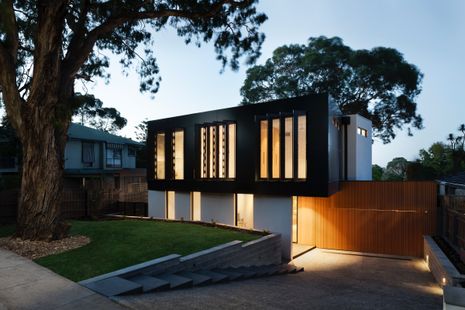|
|
|
|
|
Home Values Keep Rising
Australian property prices continue to rise with new figures showing they have increased for the eighth consecutive month.
The latest CoreLogic national Home Value Index shows property values increased by 0.8% rise in September.
The increase means Australian property values have gone up by 2.2% in the past quarter.
It was the smaller capital cities that performed well during the past month, with Adelaide up 1.7%, Brisbane and Perth, both up 1.3%.
Sydney was up by 1%, Melbourne, 0.4%, Canberra, 0.2% and Darwin, 0.1%.
Hobart is the only capital city to record a drop in September with its values down by 0.6%.
CoreLogic research director, Tim Lawless, says it is a lack of supply driving property price growth.
“The three capitals recording the highest capital gain each have advertised supply levels that are around 40% below their previous five-year average,” he says.
While prices are on the way up, Lawless says home values remain 1.3% below record highs recorded in April last year.
|
|
|
|
|
|
|
Unit Shortage Looms
The Property Council of Australia is warning of a chronic looming shortage in Australia’s unit market.
The latest Australian Bureau of Statistics building approvals data shows in July, 4490 units were approved for construction. This is 20% less than in the previous month and about 40% below the decade average.
In the past decade, units accounted for about 41.7% of completions although this dropped to 37.1% in the March quarter.
Nationally the capital city's median unit price is about 30% cheaper than that of houses, making them a more affordable option for buyers, although supply remains tight.
While many unit developments are proposed, high construction and labour costs mean many are being delayed.
According to the latest CoreLogic Hedonic Index, Sydney has the highest median unit value of $828,900.
Next is Melbourne, $612,590, followed by Canberra, $591,950 and Brisbane, $529,160.
Adelaide has a median unit value of $464,400, Perth $437,880, Hobart, $520,460 and Darwin, $382,100.
|
|
|
|
|
|
|
|
Auction Market Performing Well
Auction clearance rates remained high last week despite the distraction of two football grand finals and long weekends in some states.
There were 1215 properties taken to auction last weekend.
The preliminary clearance rate was 70.3%, down from 72% the previous week, according to CoreLogic figures.
Adelaide’s preliminary clearance rate was 79.3%, Sydney 71.7%, Brisbane, 70.7%, Melbourne, 66% and Canberra, 62.5%.
Louis Christopher of SQM Research expects the market to bounce back further next weekend.
He says housing prices are rising and although it is becoming more balanced it is still tipped in the favour of sellers.
“It’s not a robust recovery. There is still some caution out there, but there is still some aggressive bidding as well on certain properties,” he says.
“And then there are sellers who are not selling at all because they haven’t got the pricing right. This would not be a market where you get too aggressive on your asking price.”
|
|
|
|
|
|
|
|
Green Energy Boost For Regions
A national push for more green energy projects could be a boost for regional towns, leading to job opportunities and increasing demand for housing.
Analysis from Infrastructure Partnerships Australia reveals the value of infrastructure projects in the regions is $216 billion, and about half of that will be for energy projects.
It says delivering the projects will require a 150% increase in skilled workers in outer regional areas and a 30% increase in inner regional areas by the end of 2025.
IPA chief executive Adrian Dwyer says in the next wave of energy projects, 190 will be in regional Australia and 27 in remote locations as well as 14 offshore.
Dwyer says the result will be a “mountain of regional relocation” to create the workforce to deliver the projects.
“Rural and regional Australia will need thousands of skilled workers, and to meet the demand, we need the right incentives to attract skilled workers living in major cities to go bush,” he says.
|
|
|
|
|
|
|
|
Owner-Occupier Loans Rise
A slowdown in interest rate rises has enthused more buyers to return to the market, with the number of new owner-occupier loans on the rise.
Australian Bureau of Statistics lending figures show that new owner-occupier loans have returned to similar levels as pre-COVID levels.
It also reveals that refinancing remains at unprecedented levels, as owners continue to shop around for better deals in the face of high costs of living.
In August new loans to owner-occupiers rose by 2.5%.
The largest increase in August was in the Northern Territory, up 30.4%, followed by Tasmania, 17.9%, and South Australia, 12.9%.
In Western Australia, new loans increased by 4.9%, Victoria, 4%, Queensland, 2.9% and News South Wales, 2.1%.
The only region to record a drop in new loans is the ACT which dropped 3.3% in the past month. The ABS data also shows that the value of Australia’s housing stock increased by $325 billion to $10.090 billion in the June quarter. |
|
|
|
|
|
|
|
|
| Quote Of The Week
“Not only has the housing market avoided the price falls of the magnitude that many expected, but this year is actually shaping up to end with above average annual growth in Brisbane, despite interest rates being substantially higher as they continued to rise predominantly in the first half of this year.”
PropTrack senior economist Eleanor Creagh
|
|
|
|
|
|
|
|
|
|










